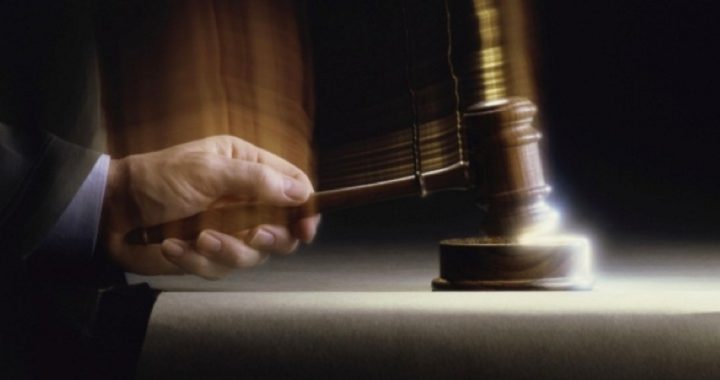
Score one conviction for domestic drones.
On January 14, North Dakota cattle rancher Rodney Brossart was sentenced to three years in prison (two and a half of which were suspended) for terrorizing police officers and resisting arrest.
The case gained national attention as Brossart is believed to be the first American to have been arrested with the aid of a drone operated by law enforcement.
Brossart was tracked and arrested by local law enforcement with the use of a federally owned aerial surveillance vehicle after holding the police at bay for over 16 hours.
Brossart’s run-in with law enforcement began after six cows found their way onto his property (about 3,000 acres near Lakota, North Dakota) and he refused to turn them over to officers. In fact, according to several sources, Brossart and a few family members ran police off his farm at the point of a gun.
Naturally, police weren’t pleased with Brossart’s brand of hospitality, so they returned with a warrant, with a SWAT team, and with a determination to apprehend Brossart and the cattle.
A standoff ensued and the Grand Forks police SWAT team made a call to a local Air Force base where they knew a Predator drone was deployed by the Department of Homeland Security. About three years before the Brossart incident, the police department had signed an agreement with DHS for the use of the drone.
No sooner did the call come in than the drone was airborne and Brossart’s precise location was pinpointed with laser-guided accuracy. The machine-gun toting SWAT officers rushed in, tased then arrested Brossart on various charges including terrorizing a sheriff, and the rest is history. Literally.
As the matter proceeds through the legal system, Bruce Quick, the lawyer representing Brossart, is decrying the “guerilla-like police tactics” used to track and capture his client, as well as the alleged violation of the Fourth Amendment’s protection against unwarranted searches and seizures.
While the police admittedly possessed an apparently valid search warrant, Quick asserts that no such judicial go-ahead was sought or obtained for the use of the Predator to track the suspect. Therein lies the constitutional rub.
In an interview with the press before the trial began, Quick claimed that the police exceeded their authority in several instances, especially when they decided to go around the Fourth Amendment and illegally search Brossart’s farm.
“The whole thing is full of constitutional violations,” he declared.
Quick went so far as to call the police’s use of the taser “tortuous” and something only slightly below “water-boarding.”
For its part, the legal team representing Grand Forks successfully claimed that such extraordinary measures were necessary in light of Brossart’s armed resistance of arrest and his family’s wielding of “high-powered rifles” in his defense.
Furthermore, the drone was deployed only as a last ditch effort to peacefully end the nearly daylong deadlock, the state argued.
“Unmanned surveillance aircraft were not in use prior to or at the time Rodney Brossart is alleged to have committed the crimes with which he is charged,” wrote state prosecutor Douglas Manbeck, as quoted by U.S. News.
As for the SWAT team’s handling of the high-powered remote control surveillance aircraft, a spokesman for the unit told U.S. News that his men have “received training on the basic capabilities of the Predator” and that they follow very clear-cut guidelines for “when [they] can or cannot use a drone.”
The loan-a-drone policy is not new, but the details of the scope of the program have recently come to light. As Warren Mass reported for The New American:
U.S. Customs and Border Protection (CBP) — the law-enforcement agency created as a division of the Department of Homeland Security in 2003 — flew nearly 700 surveillance missions on behalf of other federal, as well as state and local, law-enforcement agencies from 2010 to 2012. These figures came from flight logs released recently in response to a Freedom of Information Act (FOIA) lawsuit filed by the Electronic Frontier Foundation (EFF), a civil-liberties group.
Mass reports that, “Among the federal, state, and local law-enforcement agencies ‘borrowing’ CBP’s drones were the FBI, ICE, the U.S. Marshals, the Coast Guard, the Minnesota Bureau of Criminal Investigation, the North Dakota Bureau of Criminal Investigation, the North Dakota Army National Guard, and the Texas Department of Public Safety.”
In comments to the press prior to the trial, Manbeck defended the deployment of the drone, writing that “The use of unmanned surveillance aircraft is a non-issue in this case because they were not used in any investigative manner to determine if a crime had been committed. There is, furthermore, no existing case law that bars their use in investigating crimes.”
Maybe, maybe not. This issue was all but ignored at Brossart’s trial, with arguments focusing chiefly on the defendant’s behavior toward police.
Despite Brossart’s conviction and sentencing, an important question remains: Is there a legal distinction to be made between the level of search conducted by the human eye (whether the searcher is on foot or in a helicopter) and that of a drone’s powerful never-blinking optics?
Such an inarguable increase in police perception is not an insignificant decrease in the privacy expectation enjoyed by landowners and protected for centuries by timeless principles of Anglo-American law.
Given this encroachment into the formerly sacrosanct territory of individual liberty, Americans are right to resist the government’s apparent plan to fill the skies of our Republic with remote-controlled agents of the president and police.
In point of fact, a warrant becomes unnecessary when the search is being conducted using a drone. The target of the hunt will likely be unaware that he is being tracked and thus government (at any level) can keep a close eye on those considered threats to national (or local) security without having to permit the eye of the court to look over their shoulder.
Quick’s pre-trial comments seemed to appreciate the danger posed by the proliferation of drones. “We’re starting to see drones used more and more, but were they intended to be used by civilian law enforcement?” he told an interviewer. “That smacks of Big Brother to me. I think we need to think long and hard before we proceed down this path.”
Not surprisingly, there are those who claim that a sheriff’s use of a Predator is no different from his use of a helicopter, and that those who warn of an impending surveillance state are alarmists who should be paid no mind.
However, as discussed above, there are irrefutable differences in technology between the two vehicles, not to mention the devices used by each to perform their assigned tasks.
Apart from jail time, Brossart must pay a $1,000 fine. His three sons, who were arrested after the standoff as well, pled guilty to misdemeanors and each received a sentence of one year of probation.
Citing unnamed local media stories, U.S. News reports that Brossart “apologized for his actions and made no mention of the drone use during sentencing.”
Reading from a statement, Brossart told the judge presiding over his case, ”I recognize that I should have handled the situation differently. I take responsibility for my actions, and I will do what I can to ensure it won’t happen again.”
What will certainly happen again, however, is law enforcement will deploy a drone (probably one loaned to the department by the feds) to track, corner, and capture an American citizen.
Joe A. Wolverton, II, J.D. is a correspondent for The New American and travels frequently nationwide speaking on topics of nullification, the NDAA, the Second Amendment, and the surveillance state. He is the co-founder of Liberty Rising, an educational endeavor aimed at promoting and preserving the Constitution. Follow him on Twitter @TNAJoeWolverton and he can be reached at [email protected].



